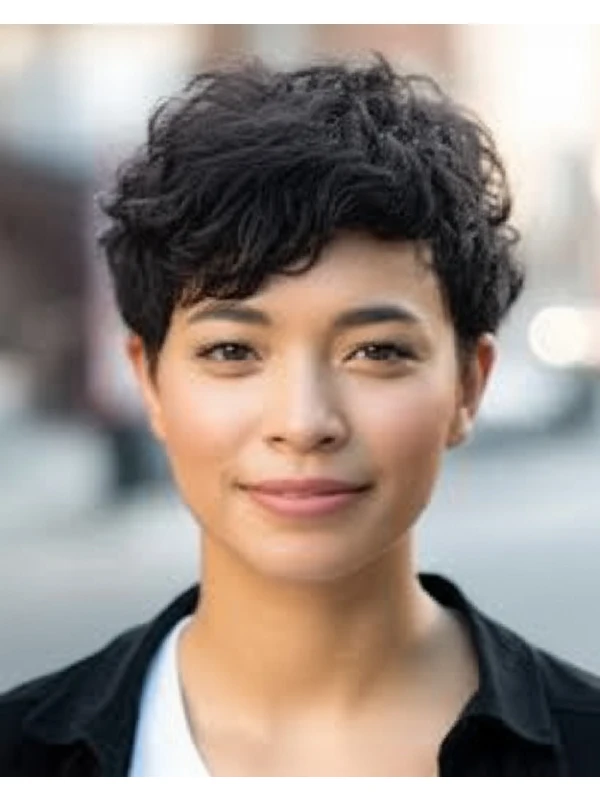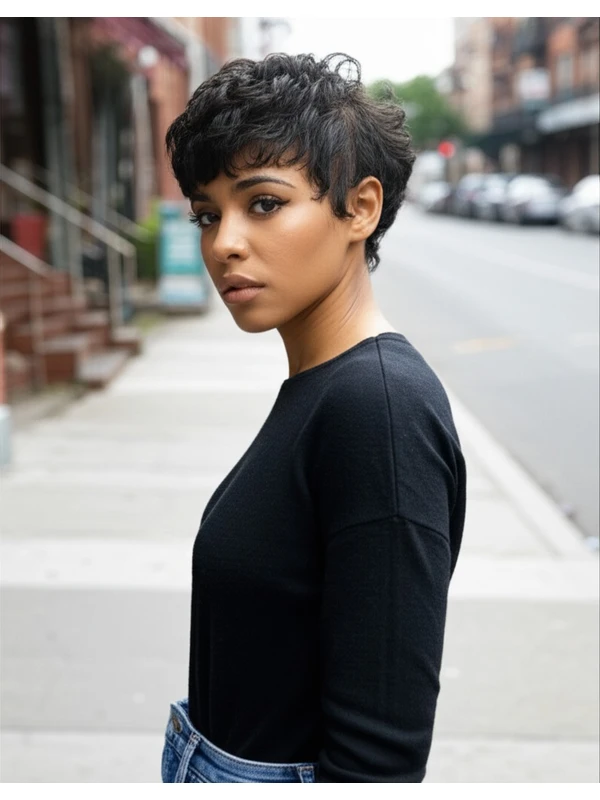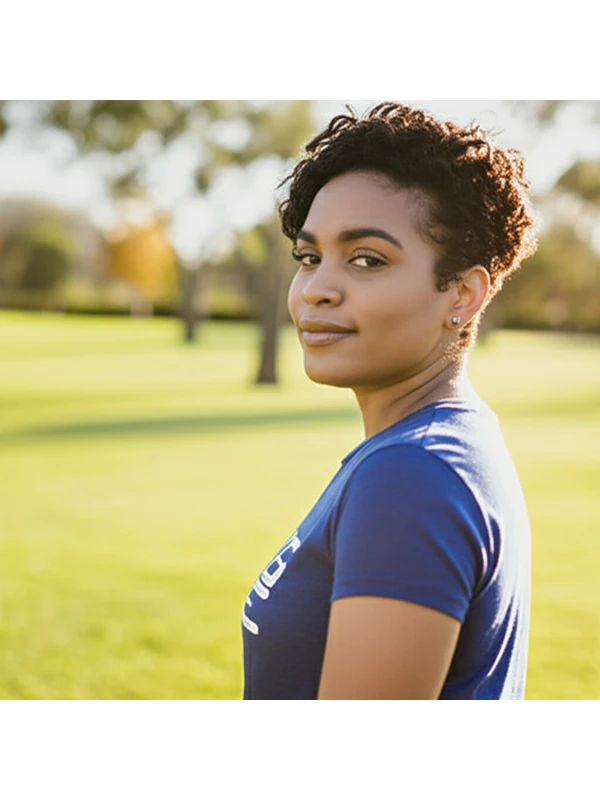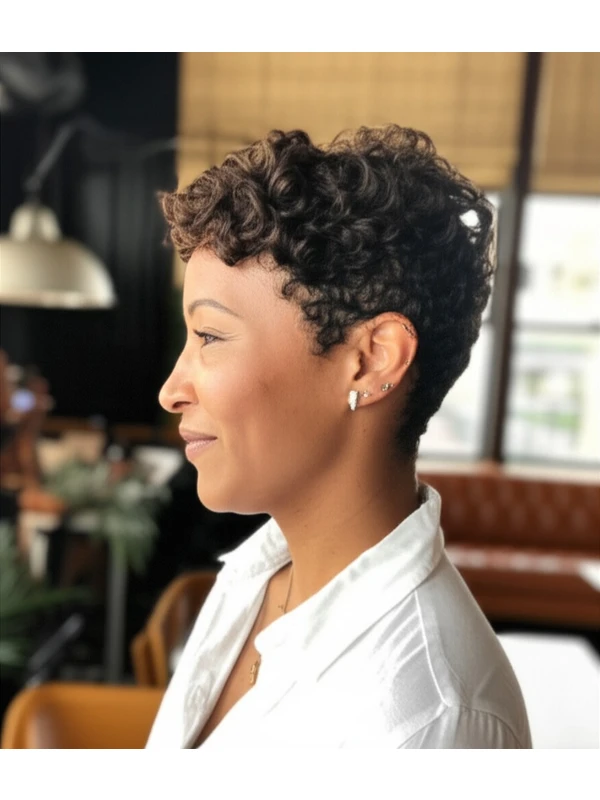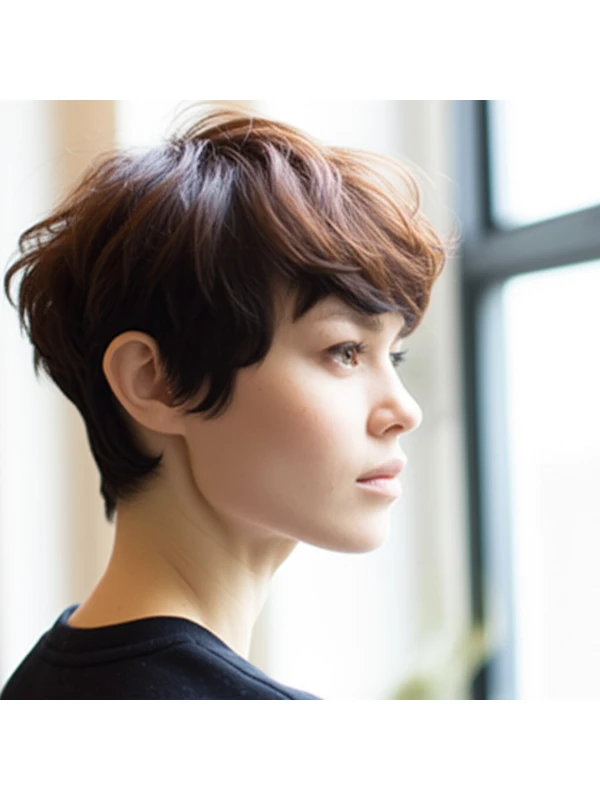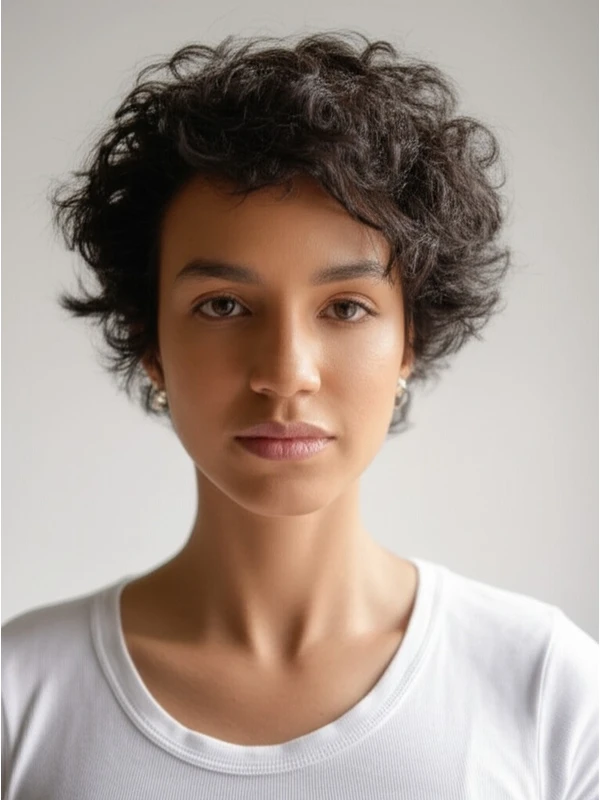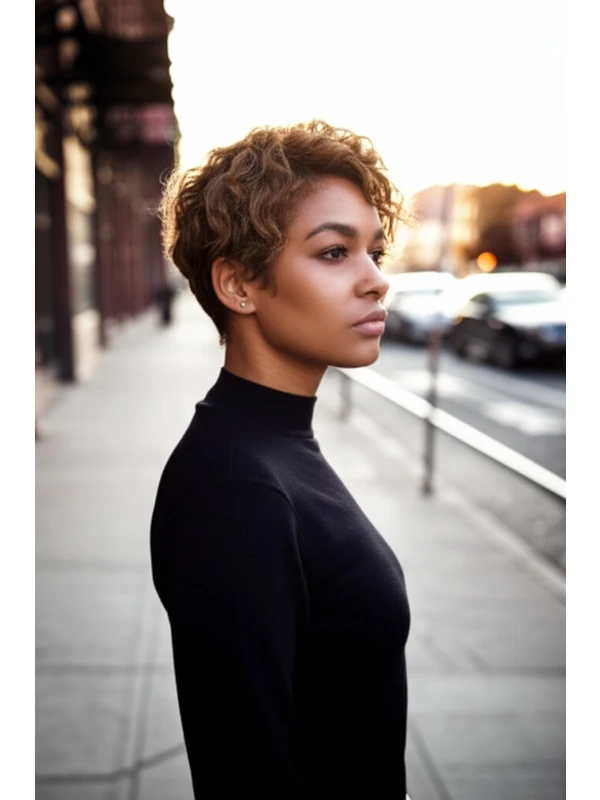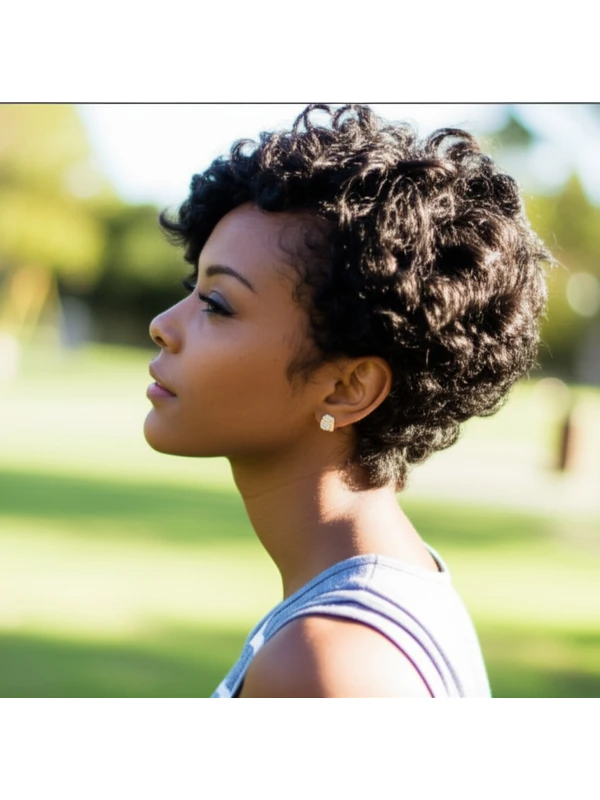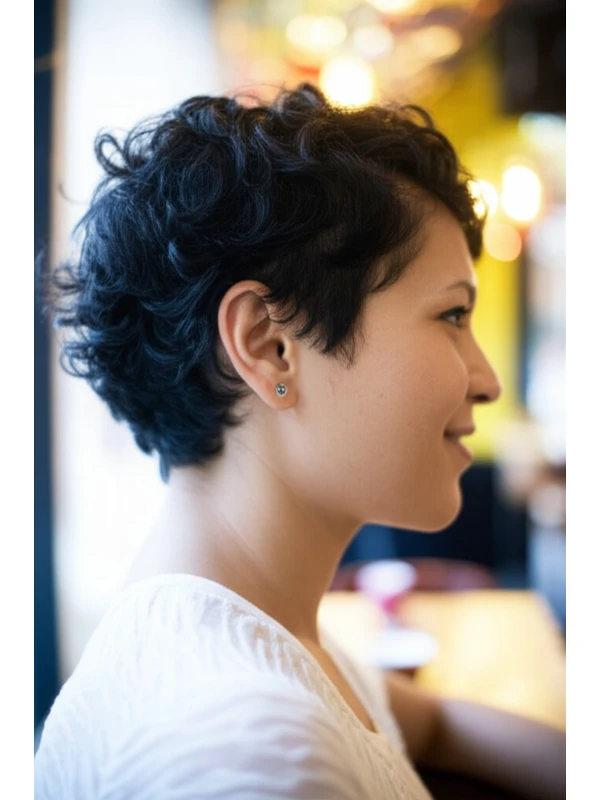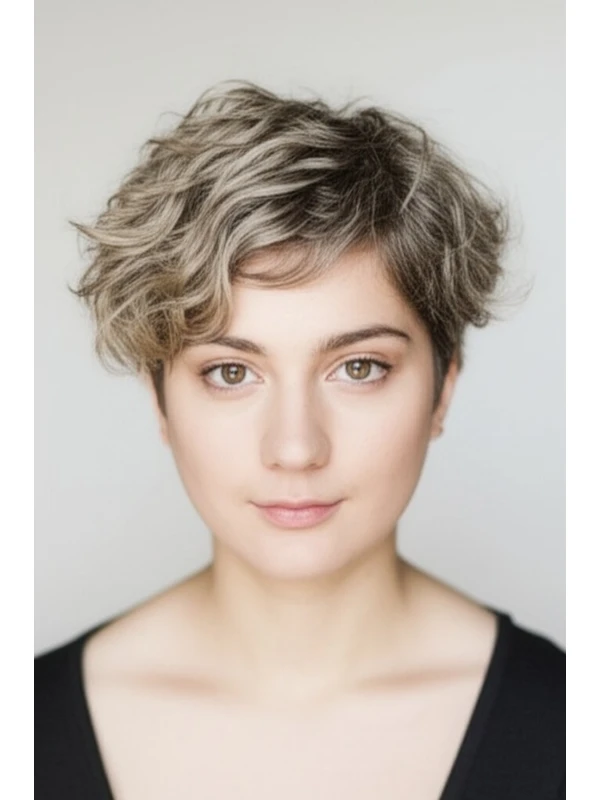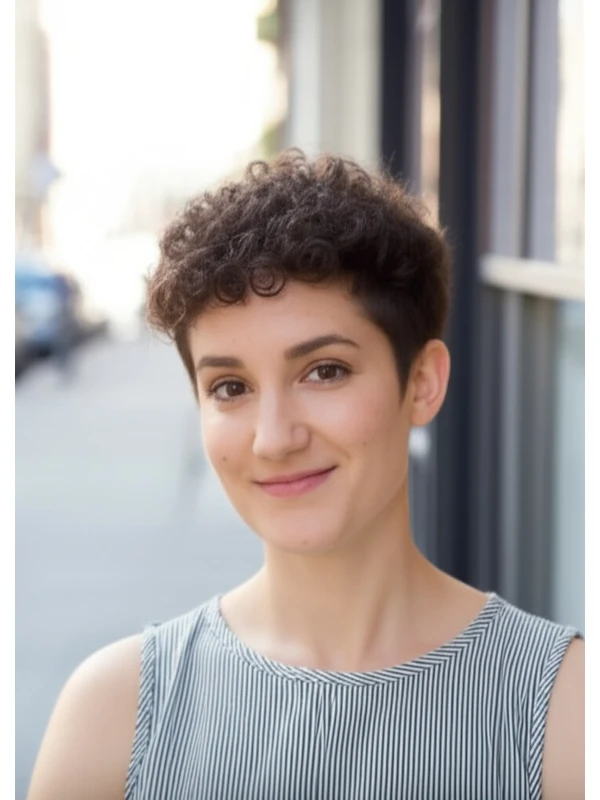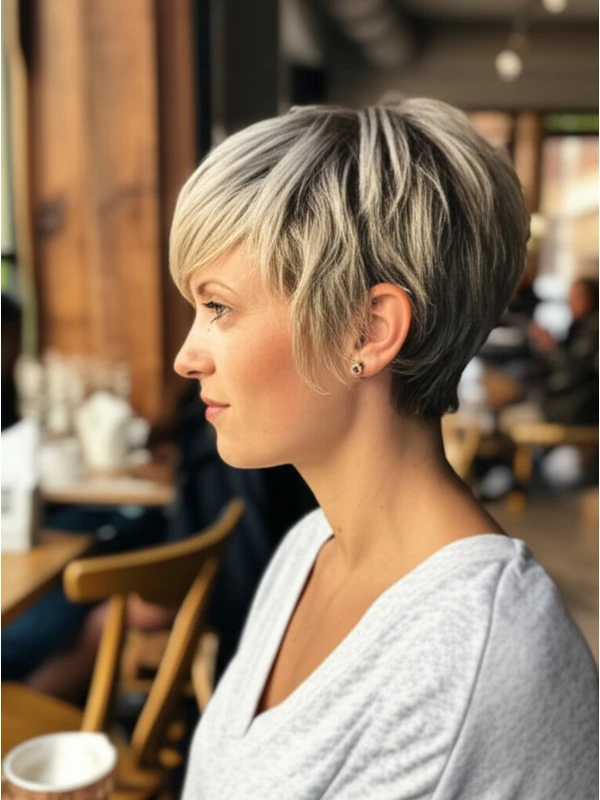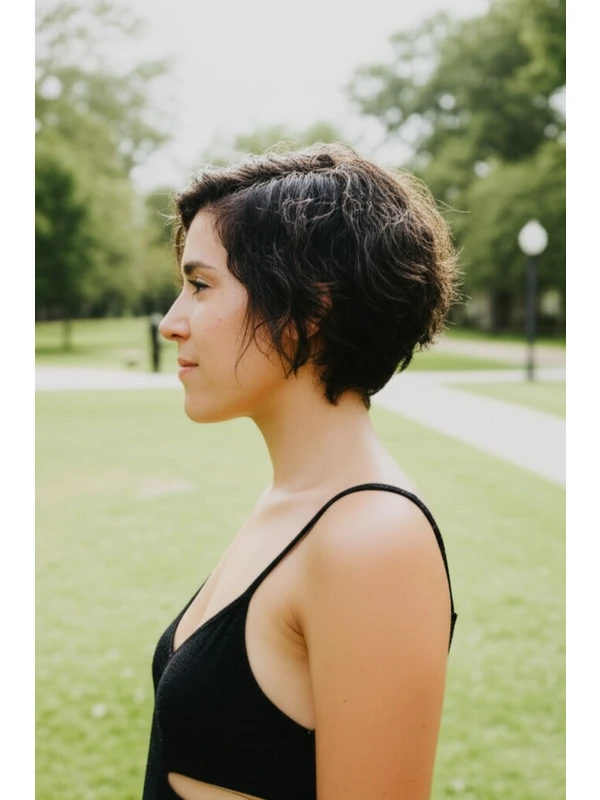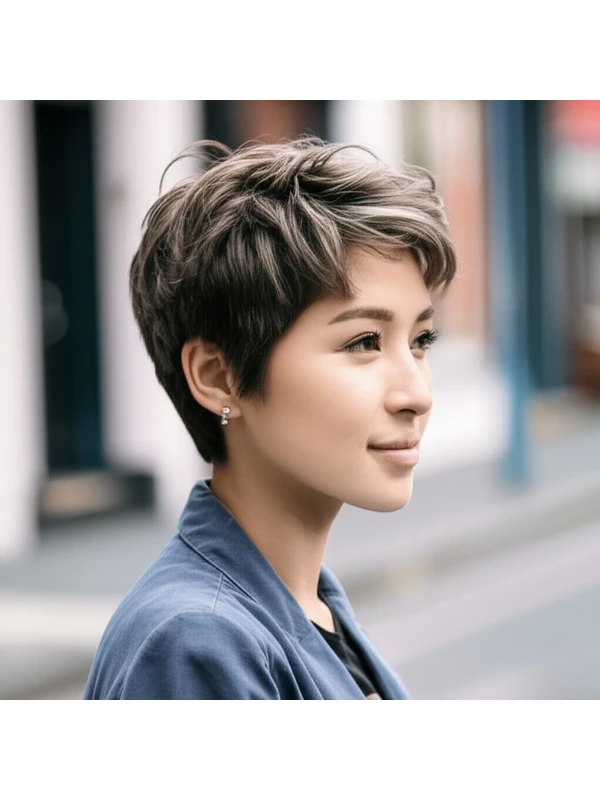#The Textured Crop: A Modern & Effortless Style Guide
The textured crop is having a major moment! It’s a chic, modern haircut that offers a lot of personality while remaining relatively low-maintenance (with the right approach). This guide will break down everything you need to know about this versatile style – from finding out if it suits your face shape to mastering its styling.
#1) Background & Definition: What is a Textured Crop?
The textured crop isn't just one thing; it’s more of a vibe. It generally refers to a shorter haircut with lots of layers and texture all over the head, creating movement and volume. Think of it as a modern take on the pixie or bob, but with added individuality.
Key Features:
- Choppy Layers: This is the defining characteristic. Layers are cut at varying lengths to create texture and lift.
- Disconnected Undercut (Optional): Some versions feature shorter sides and back that contrast with a slightly longer top, but this isn't essential.
- Face-Framing Elements: Usually incorporates pieces that soften the face around the cheekbones and jawline.
- Volume at the Crown: The layering technique is designed to create lift and volume on top of the head.
Typical Length Ranges:
- Short: Above the ear, often with a more dramatic undercut.
- Medium: Chin-length or slightly longer, allowing for more styling versatility.
- Longer Textured Crop (Lob/Long Bob): Extending to just past the shoulders – still layered but offering even greater length and movement.
Alternative Names: Shag crop, textured bob, modern pixie crop, layered short style.
#2) Face Shape Fit: Finding Your Perfect Angle
The beauty of a textured crop is its adaptability. However, certain variations work better with specific face shapes.
- Oval: Lucky you! Almost any variation of the textured crop will look fantastic on an oval face. Experiment with fringe options – a wispy, side-swept bang or a blunt, straight-across style can both be flattering.
- Round: A textured crop with height at the crown is your friend! The volume elongates the face. Avoid styles that are too round or evenly layered around the cheekbones. A longer fringe (grazing the brow) helps break up width.
- Square: Soften those angles! Layers and a side-swept fringe will diffuse the sharpness of a square jawline. Avoid blunt, severe lines.
- Heart: A textured crop can balance a wider forehead and narrow chin. Side-parting creates asymmetry that’s flattering. A wispy fringe is ideal for softening the upper face.
- Diamond: Similar to heart shapes, texture softens angles. Layers around the cheekbones add dimension. A blunt, straight-across fringe can be surprisingly chic with this shape.
- Oblong (Long): Avoid styles that emphasize length even more! Opt for a shorter textured crop with lots of volume at the sides and a heavier fringe to shorten the face visually.
#3) Body Proportions & Height Guidance: Tailoring the Silhouette
Your body type plays a role in how a haircut looks overall.
- Petite: Shorter, more cropped versions work best to avoid overwhelming your frame. Volume at the crown adds height without adding bulk.
- Average Height: You have a lot of flexibility! Medium-length textured crops are universally flattering.
- Tall: Longer textured crop (lob) styles can balance your height and create a more proportional look. Avoid overly short, choppy cuts that might make you appear even taller.
- Narrow Shoulders: Volume on top creates the illusion of broader shoulders. Layering around the face adds width.
- Broad Shoulders: Avoid adding too much volume at the sides; focus on height and a slightly more streamlined silhouette.
- Short Neck: A shorter textured crop with minimal layering directly behind the ears helps elongate the neck visually.
- Long Neck: Longer layers and face-framing pieces soften the appearance of a long neck.
#4) Works Best With Hair Types & Densities: Matching Cut to Texture
This cut is surprisingly adaptable, but understanding your hair's natural tendencies is key.
- Straight Hair: The texture will be created, so expect a more deliberate styling routine to maintain the layers and movement. Fine straight hair benefits from root-lifting products.
- Wavy Hair: The textured crop enhances natural waves! Embrace the effortless look with minimal effort.
- Curly & Coily Hair: This cut can be incredibly flattering, but shrinkage is a major factor to consider. What looks like a medium bob when dry will shrink considerably when wet. Communicate your desired length clearly to your stylist – and expect more layers than you might initially think! Density plays a big role here too (see below).
- Fine Hair: Layers add volume, but be careful not to go too short as it can make fine hair look even thinner. Texturizing products are essential for grip and hold.
- Medium Hair: This is the sweet spot! The textured crop works beautifully with medium-density hair – you have enough thickness to support the layers, but not so much that they become weighed down.
- Thick Hair: Lots of layering is crucial to remove weight and create movement. Thinning shears may be used to further reduce bulk.
Shrinkage Factor (Curls & Coils): Account for 50-75% shrinkage depending on curl pattern!
#5) Styling Variations: From Sleek to Textured
- Sleek vs. Textured: A sleek style uses a smoothing serum and minimal product. A textured look embraces the layers with texturizing spray or mousse.
- Middle vs. Side Part: A side part adds asymmetry and softens features.
- Fringe Variations: Blunt, wispy, curtain bangs – all can work! Consider your face shape and desired level of coverage.
- Occasion Styling:
- Casual: Air-dry with a texturizing spray for an effortless vibe.
- Office: Smooth the layers down with a serum or use a round brush to create subtle volume.
- Evening: Add shine and definition with pomade or wax, creating more dramatic texture.
#6) Maintenance: Keeping Your Crop Chic
- Trim Cadence: Every 4-8 weeks (depending on how quickly your hair grows and the desired shape).
- At-Home Routine: Regular deep conditioning is essential, especially for dry or curly textures.
- Heat vs Air Dry: Air drying enhances natural texture. Heat styling can create sleekness or more defined layers – use sparingly to avoid damage.
- Product Checklist:
- Shampoo & Conditioner (suited to your hair type)
- Leave-in conditioner (especially for dry/curly textures)
- Root lifter (for fine, straight hair)
- Texturizing spray or mousse (for added definition and hold)
- Serum or oil (to tame frizz & add shine)
- Estimated Daily Styling Time: 5-15 minutes.
#7) Grow-Out Roadmap: Evolving Your Look
- Months 1-3: The shape is most defined. Regular trims are crucial to maintain the layers and prevent a boxy look.
- Months 3-6: Layers start to blend together. Add more face framing pieces or adjust the fringe for continued flattery. Consider slightly longer layers if you want to transition towards a lob.
#8) Color Pairings: Enhancing Your Texture
- Cool Undertones (ash blonde, silver, cool brown): These shades enhance the coolness of the texture and create a modern edge.
- Warm Undertones (honey blonde, caramel brown, copper): Add warmth and dimension – particularly beautiful on wavy or curly hair.
- Low-Commitment Options: Balayage or babylights add subtle highlights without a harsh root line.
#9) Season & Occasion Guide: Styling for Every Moment
- Spring/Summer: Embrace the air-dried texture with lightweight products and beachy waves.
- Fall/Winter: Add warmth with richer tones and slightly more structured styling.
- Work: Sleek and polished – minimize flyaways, focus on a neat shape.
- Weddings/Parties: Experiment with bolder textures or add decorative accessories like headbands or clips.
#10) Cost & Time: Salon Investment
- Salon Time: 45-90 minutes (can be longer for thicker hair or complex color).
- Estimated Price Range: Varies significantly based on location and stylist experience – expect to pay a moderate to high price point.
#11) Pros & Cons: The Trade-Offs
Pros: Versatile, modern, flattering on many face shapes, can add volume, relatively low maintenance (with proper styling). Cons: Requires regular trims, may need specific products for optimal results, can look messy if not styled correctly.
#12) Salon Consultation Script: Your Checklist
When talking to your stylist, be prepared to discuss:
- "I'm interested in a textured crop – could you show me some examples?"
- “What length would best suit my face shape and hair type?”
- "How much layering do I need to achieve the desired volume and texture?"
- "Can we incorporate a fringe? What style would be most flattering?"
- "I'm looking for a low-maintenance style – what products and styling techniques would you recommend?"
- “What is your experience with cutting [hair type]?”
#FAQs
- Is this cut suitable for fine hair? Yes, but layering needs to be strategic to avoid thinning the appearance.
- How often do I need trims? Every 4-8 weeks is typical.
- Can I style it with just air drying? Absolutely! It’s designed to work well with natural texture.
- Will this cut make my hair look thicker? The layers can create the illusion of volume, but it won't physically change your hair density.
- What if I want to grow it out? Communicate your intentions to your stylist so they can shape the layers for a seamless transition.
- Is this cut difficult to style? It’s relatively easy with the right products and techniques, but requires more effort than a blunt bob. 7. Can I add highlights or lowlights? Absolutely! This cut is perfect for showcasing dimension through color. 8. What if my hair shrinks significantly when it dries? Discuss this with your stylist beforehand so they can account for shrinkage during the cut and recommend styling techniques to manage volume.
